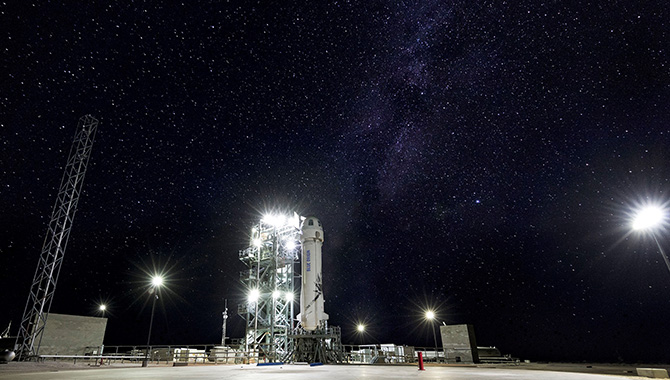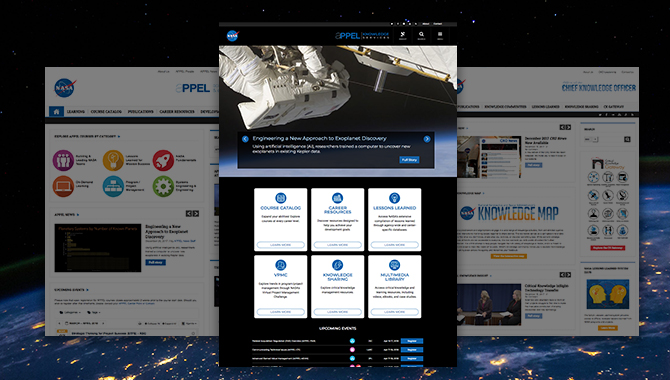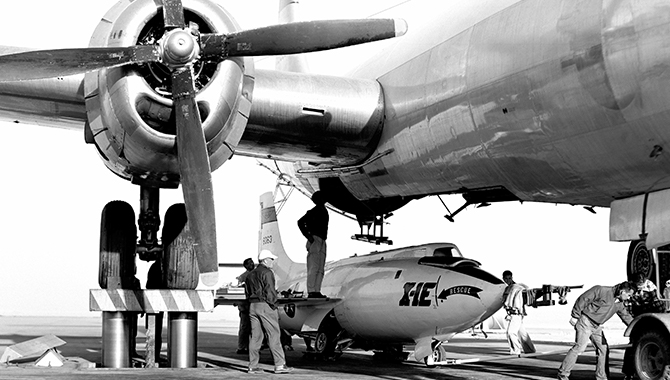
Blue Origin is one of six companies selected for NASA’s Tipping Point solicitation. Pictured here, Blue Origin’s New Shepard rocket lifted off July 18 carrying five NASA-supported technologies to flight test in space.
Credit: Courtesy of Blue Origin
NASA announces partnerships to push promising technologies past the tipping point with a combined $44 million investment.
New cryogenic fluid management systems, rocket engines, and propulsion units are among 10 technologies NASA recently identified as being at a “tipping point,” during a competitive solicitation. NASA will partner with the six firms developing the technologies, providing a total of approximately $44 million, to advance the concepts.
“NASA is going back to the moon and on to Mars in a major, sustainable way. It is American innovation that will lead the way,” said James L. Reuter, acting associate administrator for NASA’s Space Technology Mission Directorate (STMD), speaking at a teleconference. “We’ll expand our partnerships with industry, and other nations to explore the moon and advance our missions to farther destinations, such as Mars.”
This is NASA’s third round of the Tipping Point solicitation, which focused on technologies that would expand the utilization of space, enable efficient and safe transportation into and through space, and increase access to planetary surfaces.
“For this solicitation, a technology is considered at a tipping point if an investment in a demonstration of its capabilities will result in a significant advancement of the technology’s maturation, has a high likelihood of infusion into a commercial space application, with a significant improvement in the ability to successfully bring the technology to market,” Reuter said.
Astrobotic Technology, Inc., a firm in Pittsburgh, Pennsylvania, will demonstrate a Terrain Relative Navigation (TRN) sensor suite, which estimates a vehicle’s position by comparing measurements of the terrain with a map. The passive-optical sensor developed by Astrobotic Technology is low-mass and has low power requirements.
“Demonstrating these capabilities will allow the team to assist NASA in dramatically improving the performance of lunar and planetary landing missions,” Reuter said.
United Launch Alliance, L.L.C. (ULA) in Centennial, Colorado will continue to develop an Integrated Vehicle Fluids (IVF) system and fly it on a Centaur rocket. The system supports extended-duration cryogenic upper stage operations. It takes advantage of available liquid hydrogen and oxygen to provide multiple kilowatts of power, while potentially eliminating battery power, helium pressurization, and the hydrogen reaction control system.
Frontier Aerospace Corporation in Simi Valley, California will conduct a flight demonstration of their deep space rocket engine, a 100-150 pound class, hyperbolic, bipropellant design. The engine uses MON-25 (a mixture of nitrogen tetroxide and nitrogen oxide) as an oxidizer with monomethylhydrazine.
“These two fuels, when combined, provide the propulsive force. MON-25 provides benefits for exploration landers and deep space missions due to its lower freezing point, lower system weight, and less required power,” Reuter noted.
Other partnerships and technologies are:
Blue Origin, L.L.C., in Kent, Washington; Cryogenic Fluid Management-Enhanced Integrated Propulsion Testing for Robust Lander Services
Space Systems/Loral, L.L.C., (SSL) in Palo Alto, California; In-Space Xenon Transfer for Satellite, Servicer and Exploration Vehicle Replenishment and Life Extension
Paragon Space Development Corporation in Tucson, Arizona; Cryogenic Encapsulating Launch Shroud and Insulated Upper Stage (CELSIUS)
SSL; High Efficiency 6kW Dual Mode Electric Propulsion Engine for Broad Mission Applications
ULA; Cryogenic Fluid Management Technology Demonstration
Blue Origin; Advancing Sensor Suites to Enable Landing Anywhere on the Lunar Surface
ULA; Mid-Air Retrieval (MAR) Demonstration
Companies submitted about 90 projects in the initial round, which included a brief white paper and rough cost proposal. NASA invited approximately 25 projects to submit a more detailed proposal, complete with a business plan on commercial applications for the technology.
The firms will enter firm-fixed-price contracts with NASA and will be assigned a NASA project lead. The projects will be industry led but with regular interactions between the firms and their NASA leads over the approximately 15-to-36-month duration of the projects.
“I am excited to announce our selections. It is technology that drives exploration—both human and robotic—and helps us solve problems in space and on Earth. It lays the groundwork for our future missions and addresses many needs, including how we’ll live in space and how we’ll get there, and [technology] will also support the growing U.S. commercial space industry,” Reuter said.
“The NASA industry partnerships have and will continue to play a critically important role for our space technology mission directorate in stimulating further investments and enabling technologies that may not have been developed and demonstrated otherwise,”









